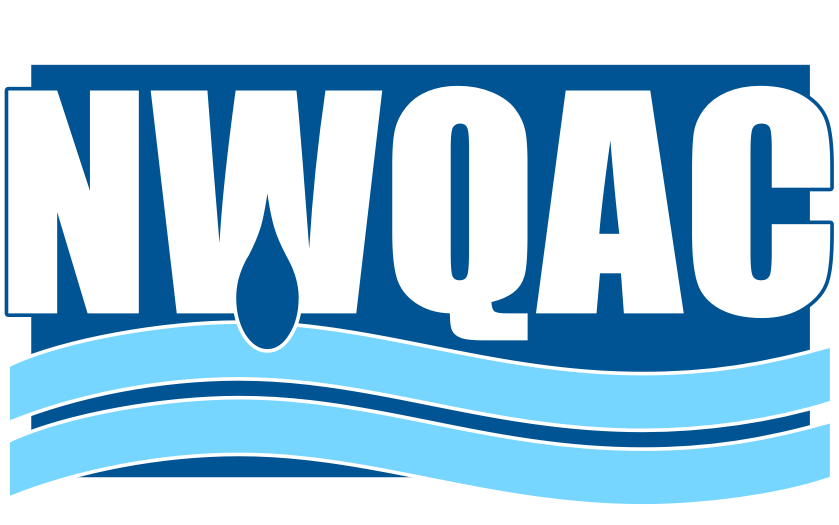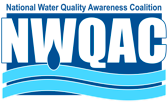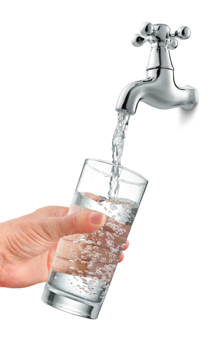List of EPA Regulated Contaminants
Pay particular attention to the column entitled “Potential Health Effects from Ingestion of Water” and you’ll find pneumonia, CANCER (just count how many times the word CANCER pops up), anemia, nervous system damage, liver damage, kidney damage, thyroid problems, bone disease, mental disorders, circulatory problems, cardiovascular problems, reproductive problems, cataracts, stomach and intestinal problems, AND DEATH
What Are The Health Effects of Contaminants In Drinking Water - from the EPA Website
EPA has set standards for more than 80 contaminants that may occur in drinking water and pose a risk to human health. EPA sets these standards to protect the health of everybody, including vulnerable groups like children. The contaminants fall into two groups according to the health effects that they cause. Your water supplier is supposed to alert you through the media, mail, or other means if there is a potential acute or chronic health effect from compounds in the drinking water.
Lead in Drinking Water
Arsenic In Drinking Water
Human Health Benchmarks for Pesticides
Emergency Disinfection of Drinking Water
Locate YOUR Drinking Consumer Confidence Report (EPA)
Water Quality Association
The Water Quality Association is a not-for-profit international trade association representing the household, commercial, industrial, and small community water treatment industry. WQA maintains a close dialogue with other organizations representing different aspects of the water industry in order to best serve consumers, government officials, and industry members.
WQA is a resource and information source, a voice for the industry, an educator for professionals, a laboratory for product testing, and a communicator to the public.
Environmental Protection Agency
The Environmental Protection Agency enforces federal clean water and safe drinking water laws, provides support for municipal wastewater treatment plants, and takes part in pollution prevention efforts aimed at protecting watersheds and sources of drinking water. The Agency carries out both regulatory and voluntary programs to fulfill its mission to protect the nation's waters. This link takes you straight to EPA’s water quality links.
Contaminant Guide from the National Sanitation Foundation (NSF)
All sources of drinking water contain some naturally occurring contaminants. At low levels, most of these contaminants are not considered by the EPA to be harmful. Naturally occurring contaminants include radon, radium, and arsenic. In addition, people, animals, and industry can also add contaminants to our water supplies. Some of the more common contaminants that can be introduced into our water supplies include microorganisms, pesticides, and nitrates.
This site lists many of the common contaminants that can be found in public and private drinking water supplies. In addition, they have also included several chemicals commonly used to treat our drinking water supplies. If you would like to see further information on a specific contaminant, you can select that contaminant for additional facts.
Learn More About Consumer Confidence Reports (CCRs) from NSF
Do you want to learn more about the quality of your public water supply, but are not sure where to go?
One of the best ways to educate yourself about local water quality conditions is to obtain a copy of your community's Consumer Confidence Report (CCR). This annual report, which is issued around July 1 each year, provides consumers with detailed information regarding the source of their drinking water and the treatment methods used, as well as the quality of the finished drinking water that was provided to your community during the previous calendar year.
After you’ve learned all about CCR’s, Download Yours Here at the EPA Website
Each year by July 1 you should receive in the mail a short report (consumer confidence report) from your water supplier that tells where your water comes from and what's in it -- see if your report is posted on-line or read a fact sheet about these new reports.
DRINKING WATER AND HEALTH: What You Need To Know - from the EPA Website
The United States has one of the safest water supplies in the world. However, national statistics don't tell you specifically about the quality and safety of the water coming out of your tap. That's because drinking water quality varies from place to place, depending on the condition of the source water from which it is drawn and the treatment it receives.
Pay particular attention to the column entitled “Potential Health Effects from Ingestion of Water” and you’ll find pneumonia, CANCER (just count how many times the word CANCER pops up), anemia, nervous system damage, liver damage, kidney damage, thyroid problems, bone disease, mental disorders, circulatory problems, cardiovascular problems, reproductive problems, cataracts, stomach and intestinal problems, AND DEATH
What Are The Health Effects of Contaminants In Drinking Water - from the EPA Website
EPA has set standards for more than 80 contaminants that may occur in drinking water and pose a risk to human health. EPA sets these standards to protect the health of everybody, including vulnerable groups like children. The contaminants fall into two groups according to the health effects that they cause. Your water supplier is supposed to alert you through the media, mail, or other means if there is a potential acute or chronic health effect from compounds in the drinking water.
Lead in Drinking Water
Arsenic In Drinking Water
Human Health Benchmarks for Pesticides
Emergency Disinfection of Drinking Water
Locate YOUR Drinking Consumer Confidence Report (EPA)
Water Quality Association
The Water Quality Association is a not-for-profit international trade association representing the household, commercial, industrial, and small community water treatment industry. WQA maintains a close dialogue with other organizations representing different aspects of the water industry in order to best serve consumers, government officials, and industry members.
WQA is a resource and information source, a voice for the industry, an educator for professionals, a laboratory for product testing, and a communicator to the public.
Environmental Protection Agency
The Environmental Protection Agency enforces federal clean water and safe drinking water laws, provides support for municipal wastewater treatment plants, and takes part in pollution prevention efforts aimed at protecting watersheds and sources of drinking water. The Agency carries out both regulatory and voluntary programs to fulfill its mission to protect the nation's waters. This link takes you straight to EPA’s water quality links.
Contaminant Guide from the National Sanitation Foundation (NSF)
All sources of drinking water contain some naturally occurring contaminants. At low levels, most of these contaminants are not considered by the EPA to be harmful. Naturally occurring contaminants include radon, radium, and arsenic. In addition, people, animals, and industry can also add contaminants to our water supplies. Some of the more common contaminants that can be introduced into our water supplies include microorganisms, pesticides, and nitrates.
This site lists many of the common contaminants that can be found in public and private drinking water supplies. In addition, they have also included several chemicals commonly used to treat our drinking water supplies. If you would like to see further information on a specific contaminant, you can select that contaminant for additional facts.
Learn More About Consumer Confidence Reports (CCRs) from NSF
Do you want to learn more about the quality of your public water supply, but are not sure where to go?
One of the best ways to educate yourself about local water quality conditions is to obtain a copy of your community's Consumer Confidence Report (CCR). This annual report, which is issued around July 1 each year, provides consumers with detailed information regarding the source of their drinking water and the treatment methods used, as well as the quality of the finished drinking water that was provided to your community during the previous calendar year.
After you’ve learned all about CCR’s, Download Yours Here at the EPA Website
Each year by July 1 you should receive in the mail a short report (consumer confidence report) from your water supplier that tells where your water comes from and what's in it -- see if your report is posted on-line or read a fact sheet about these new reports.
DRINKING WATER AND HEALTH: What You Need To Know - from the EPA Website
The United States has one of the safest water supplies in the world. However, national statistics don't tell you specifically about the quality and safety of the water coming out of your tap. That's because drinking water quality varies from place to place, depending on the condition of the source water from which it is drawn and the treatment it receives.







